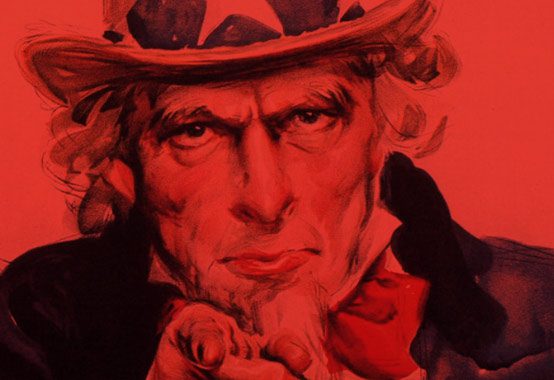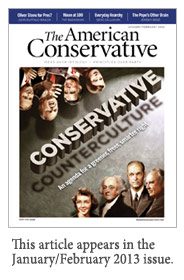« Governo Globale | Page d'accueil | De trotskistische wortels van het neoconservatisme »
mercredi, 13 février 2013
Two, Three, Many McCarthyisms
Two, Three, Many McCarthyisms
Review of: Manufacturing Hysteria: A History of Scapegoating, Surveillance, and Secrecy in Modern America, Jay Feldman, Anchor, 416 pages

“I dreamed I saw Joe Hill last night, alive as you and me.” The oft-recorded folk standard tells of a misty encounter with the legendary labor activist and member of the Industrial Workers of the World. Hill was executed in Utah in 1915, after a dubious trial, for a double murder he most likely did not commit. In Manufacturing Hysteria, a wide-ranging history of sedition panics and government repression in modern America, journalist Jay Feldman uses Hill’s execution as an example of fear run amok.
Feldman begins with the administration of Woodrow Wilson. The 28th president was an authoritarian who began stoking fears of “hyphenated-Americans”—whom he claimed “poured the poison of disloyalty into the very arteries of our national life”—before the United States went to war with Germany. After entering the Great War, the Wilson administration and a compliant Congress enacted the Espionage Act of 1917, which gave the government vast powers of repression. Senator William Borah of Idaho, one of the few legislators to vote against the act, stated that “a more autocratic, more Prussian measure could not be found in Germany.” The legislation apparently wasn’t Prussian enough and was soon joined by the Sedition Act, which made it a crime to “utter, print, write, or publish any disloyal, profane, scurrilous, or abusive language about the form of government of the United States.”
Socialist presidential candidate Eugene Debs became the most famous free-speech prisoner during the Great War. He was indicted in 1918 for declaiming at a Canton, Ohio Socialist picnic that, inter alia, the “patriotic duty” of the ruling class “never takes them to the firing line or chucks them into the trenches.” The prosecuting attorney called him “the palpitating pulse of the sedition crusade.” The jury agreed, and Debs received a ten-year sentence, served until it was commuted in 1921 by President Harding.
The Sedition Act gave Postmaster General Albert Burleson power over every publication in the country. Burleson directed local postmasters to “keep a close watch on unsealed matters, newspapers, etc.” The Post Office then proceeded to ban numerous, mostly Socialist publications. When an issue of The Masses was censored, editor Max Eastman protested to Woodrow Wilson, as did Amos Pinchot and John Reed. Their complaints went unheeded, and Burleson added insult to injury by revoking the second-class mailing permit from The Masses and other publications that had had an issue banned, on the grounds that they were no longer periodicals.
Manufacturing hysteria is much easier with the aid of a compliant press. Feldman documents the leading role played by the New York Times in stoking fear of “hyphenated-Americans” and immigrant radicals. When the anarchists Emma Goldman and Alexander Berkman were deported, the Times practically spat nails at them. “With the general American gratification at the departure of these unclean spirits may well be mingled something of shame to remember how long they suffered to afflict us.” It wasn’t just the Times—Feldman quotes papers from the Seattle Times to the Washington Post supporting the deportation of, as the Post put it, “bewhiskered, ranting, howling, mentally warped, law-defying aliens.”
Elite newspaper editors used words, but angry mobs often resorted to bloodshed. Manufacturing Hysteria begins with a prologue describing numerous examples of mob violence, including the 1918 lynching of Robert Paul Prager, who was suspected of being a spy. “On April 3, a group of miners seized Prager and, employing the ritual widely practiced on anyone suspected of disloyalty, compelled him to kiss the flag.” Collinsville, Illinois officials made feeble attempts to save Prager’s life, but the mob broke him out of custody and hanged him from a tree. Eleven defendants were eventually acquitted of his murder in a trial described as a “farcical patriotic orgy.”
After the war widespread paranoia fostered several attempted or successful terrorist bombings, allowing the federal government to keep the heat on socialists and anarchists. A series of mail bombs caused explosions that rocked seven cities on June 2, 1919, including at the home of U.S. Attorney General A. Mitchell Palmer. A leaflet found near the Palmer residence spouted incendiary rhetoric: “There will have to be bloodshed; we will not dodge; there will have to be murder; we will kill, because it is necessary; there will have to be destruction…” The crimes were never solved: evidence suggested that the federal government suspected a small band of Italian-American anarchists known as the Galleanists, but it chose instead to fan fears of a national conspiracy.
The 1919 Red Scare helped advance the career of a young J. Edgar Hoover at what was then the Bureau of Investigation (BI). In 1921, he was elevated to its assistant director under President Harding. After a Justice Department house cleaning in 1924, the new attorney general, Harlan Fiske Stone, promoted Hoover again. Feldman notes Hoover’s cynicism in portraying himself as a “champion of civil liberties and tolerance” to please the new regime. The cynical ploy worked so well that Hoover won the endorsement of the American Civil Liberties Union after he convinced ACLU founder Roger Baldwin that he had not been a supporter of the Palmer Raids and repressive tactics of the BI. Once ensconced, Hoover gripped the reins of power so tightly that they could only be pried from his cold, dead hands nearly 50 years later.
Stone instituted reforms to reel in the BI and refocus it on law enforcement instead of tracking subversives. The rise of organized crime during Prohibition helped to give the bureau new purpose for a time. President Franklin Roosevelt—whom Feldman notes possessed an “often cavalier disregard for civil liberties”—uncorked the bottle again when he met with Hoover in 1936 to discuss the subversive activities of suspected Fascists and Communists. FDR was particularly concerned with the German American Bund. The result was an FBI back in the business of domestic intelligence gathering.
When the Japanese attacked Pearl Harbor in 1941, the Roosevelt administration issued a proclamation restricting the activities of Japanese aliens in the U.S., and shortly thereafter he would do the same regarding German and Italian aliens. Only people of Japanese ancestry, however, were placed in internment camps on a large scale. Feldman writes that “a cloud of suspicion hung over all three communities, based in large part on the assumption and fear that aliens’ loyalties were necessarily divided between the United States and their countries of origin.” German and Italian aliens avoided large-scale internment because they were too great in number and were protected by the administration’s fear of angering the sizable German-American and Italian-American communities. Feldman quotes two very different columnists supporting the internment of people of Japanese ancestry:
Such disparate and influential syndicated newspaper pundits as the measured liberal Walter Lippmann and the acerbic conservative Westbrook Pegler both came out in favor of removal. In a piece called ‘The Fifth Column on the Coast,’ Lippmann argued for ‘a policy of mass evacuation and mass internment,’ and three days later Pegler fulminated, ‘The Japanese in California should be under armed guard to the last man and woman right now—and to hell with habeas corpus until the danger is over.’
The aftermath of World War II saw the country embroiled in a second Red Scare. In the 1940s, former spies Elizabeth Bentley and Whittaker Chambers publicly admitted to having been Soviet agents and exposed, among others, high-ranking officials like Harry Dexter White and Alger Hiss as being spies as well. White denied the charges and died of a heart attack within days of testifying before Congress. Hiss also denied the charges under oath and was later convicted of perjury. Both were implicated by the secret Venona Project, which tracked Soviet espionage in the United States. One weakness of Manufacturing Hysteria is that Feldman gives too little credence to these charges and neglects to mention the Venona evidence.
After Republican gains in the 1946 midterm elections, the Truman administration began a series of anticommunist loyalty investigations within the federal government, establishing the Employees Loyalty Program by executive order in 1947. The fear of communism set the stage for the rise of Joseph McCarthy, who gave his infamous Lincoln Day speech in Wheeling, West Virginia on February 9, 1950, just days after Hiss was convicted of perjury. “McCarthyism” would become a byword for second Red Scare.
With his explosive charges of Soviet spies in high places, McCarthy became a dominant force in American politics before sawing himself off of the limb he sat on. The Wisconsin senator ceased to be a significant force after he was censured by his fellow legislators in 1954, but the hunt for subversives continued. The FBI instituted a series of “Counterintelligence Programs”—COINTELPRO—during the 1950s to entrap real and imagined subversives. The most famous target of Hoover and the FBI was Martin Luther King. The investigation of King was based the assumption that some of his associates were Communists, but the FBI’s level of attention suggests a more personal motivation. Hoover intervened to keep Marquette University from granting King an honorary degree and was especially agitated at King’s winning a Nobel Peace Prize. The bureau’s most egregious abuse of power in this case was a crude attempt to wreck King’s marriage by sending him illegally recorded tapes of his marital infidelities, accompanied by a crudely forged letter encouraging him to commit suicide before his “filthy, abnormal fraudulent self is bared to the nation.”
The harassment of King and other COINTELPRO abuses came to light toward the end of Hoover’s career as the level of trust Americans had in their government was collapsing. COINTELPRO was exposed by a group styling themselves the Citizen’s Commission to Investigate the FBI, whose members broke into a federal office in Media, Pennsylvania and began mailing pilfered documents to reporters and legislators.
Feldman calls for vigilance in the wake of continuing assaults on civil liberties, and there are plenty of areas of to be concerned about, from the national hysteria that followed the 9/11 attacks to the trend toward militarization of law enforcement. There have been notable civil-liberties successes, however, in the last century: if the Bush administration had had the same level of authority in 2002 as Woodrow Wilson did in 1917, the feds would have strangled The American Conservative in its crib, and the war critics who filled its pages would have gone to prison.
Clark Stooksbury writes from Knoxville, Tennessee.
00:08 Publié dans Livre | Lien permanent | Commentaires (0) | Tags : états-unis, maccarthysme, censure, livre, répression, tolérance répressive, intolérance |  |
|  del.icio.us |
del.icio.us |  |
|  Digg |
Digg | ![]() Facebook
Facebook




Les commentaires sont fermés.